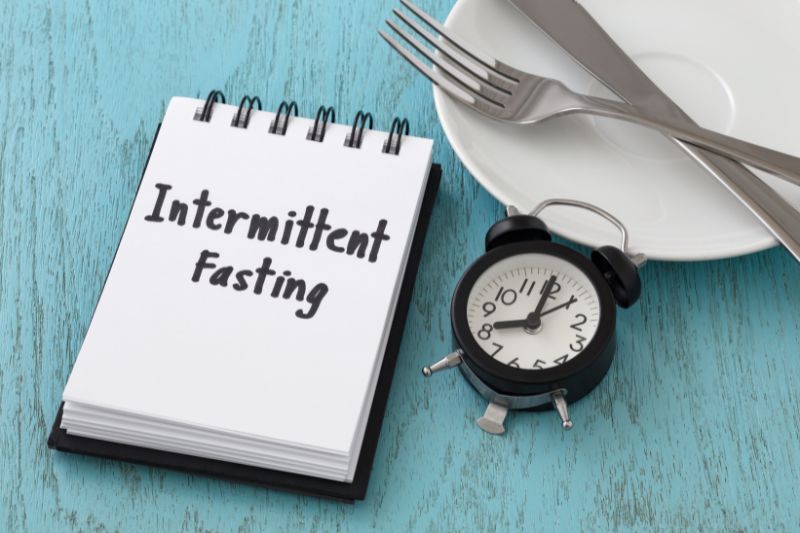
Intermittent fasting is a popular dietary approach that involves cycling between periods of eating and periods of abstaining from food. It is not a diet in the traditional sense, as it does not specify which foods to eat, but rather when to eat them.
There are many different intermittent fasting schedules that people can follow, and each has its own set of potential benefits and drawbacks. In this article, we will explore some of the most popular intermittent fasting schedules and discuss which ones might be the best fit for you.
Before diving into the different intermittent fasting schedules, it is important to understand how intermittent fasting works. During the period of abstention from food (here are some ideas for what you can drink during fasting), the body is forced to use stored fats as fuel, leading to weight loss and other potential health benefits. Some people also find that intermittent fasting can help to improve their mental clarity and focus, as well as reduce inflammation and improve insulin sensitivity.
Now, let’s take a look at some of the most popular intermittent fasting schedules:
1. The 16/8 Method:
This is perhaps the most popular intermittent fasting schedule, and it involves a 16-hour period of fasting followed by an 8-hour window for eating. For example, you might skip breakfast and only eat during the hours of noon to 8pm. This schedule is relatively easy to stick to and allows for a relatively normal eating pattern. It is also flexible enough to accommodate people with different lifestyles and schedules.
One potential benefit of the 16/8 method is weight loss. By restricting your eating window to 8 hours, you are likely to eat fewer calories overall, which can lead to weight loss. In addition, the period of fasting can encourage the body to use stored fats as fuel, leading to further weight loss. Some people also find that the 16/8 method can improve mental clarity and focus, as well as reduce inflammation and improve insulin sensitivity.
However, it is important to note that the 16/8 method is not suitable for everyone. If you have a medical condition that requires you to eat frequently, such as hypoglycemia, this schedule may not be appropriate. It is also not suitable for people who have a hard time sticking to the 8-hour eating window, as it can lead to overeating or malnutrition.
2. The 5:2 Diet:
This schedule involves eating normally for 5 days of the week and restricting calories to 500-600 for the other 2 non-consecutive days. This can be a more challenging schedule for some people, as it requires a significant reduction in calorie intake for 2 days of the week. However, it can be an effective way to reduce calorie intake and promote weight loss.
One potential benefit of the 5:2 diet is that it allows for more flexibility in terms of food choices. On the non-fasting days, you are free to eat normally and enjoy a variety of foods. This can make the diet easier to stick to for some people. In addition, the periods of calorie restriction can encourage the body to use stored fats as fuel, leading to weight loss. Some people also find that the 5:2 diet can improve insulin sensitivity and reduce inflammation.
3. Alternate-Day Fasting:
As the name suggests, this schedule involves alternating between days of fasting and days of normal eating. On fasting days, you can consume water, calorie-free beverages, and small amounts of low-calorie foods such as broth or vegetables. On non-fasting days, you can eat normally. This can be a difficult schedule to stick to, as it requires a complete abstention from food every other day.
One potential benefit of alternate-day fasting is weight loss. By restricting calorie intake every other day, you are likely to eat fewer calories overall, which can lead to weight loss. In addition, the periods of fasting can encourage the body to use stored fats as fuel, leading to further weight loss. Some people also find that alternate-day fasting can improve insulin sensitivity and reduce inflammation.
4. The Eat-Stop-Eat Method:
This schedule involves one or two 24-hour periods of fasting per week. For example, you might abstain from food from dinner one day until dinner the next day. This schedule can be challenging for some people, but it can be an effective way to reduce calorie intake and promote weight loss.
One potential benefit of the Eat-Stop-Eat method is that it allows for more flexibility in terms of food choices. On the non-fasting days, you are free to eat normally and enjoy a variety of foods. This can make the diet easier to stick to for some people. In addition, the 24-hour periods of fasting can encourage the body to use stored fats as fuel, leading to weight loss. Some people also find that the Eat-Stop-Eat method can improve insulin sensitivity and reduce inflammation.

So, which intermittent fasting schedule is the best? The answer depends on your individual goals and lifestyle. If you are new to intermittent fasting, the 16/8 method might be a good place to start, as it is relatively easy to stick to and allows for a normal eating pattern.
If you are looking for a more extreme approach, the ketovore diet, or alternate-day fasting or Eat-Stop-Eat method might be more suitable. It is also important to consider your personal preferences and whether a particular schedule fits with your lifestyle and schedule.
In conclusion, there are many different intermittent fasting schedules to choose from, and each has its own set of potential benefits and drawbacks. The best intermittent fasting schedule for you will depend on your individual goals and lifestyle.
It is important to choose a schedule that you can stick to and that fits with your personal preferences. As with any major dietary change, it is always a good idea to consult with a healthcare professional before starting an intermittent fasting schedule.




